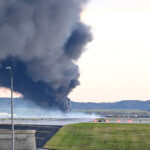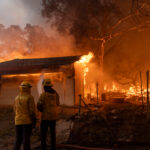Despite an uneventful hurricane season, structural changes in catastrophe coverage are here to stay and will continue to impact capacity and pricing in 2007, according to Ben Beazley, managing director of Chartwell Independent Insurance Brokers.
“The catastrophe market is in the middle of dramatic structural change,” Beazley said while moderating a symposium panel in Los Angeles on property catastrophe coverage. “Failure to understand these changes may lead to an inability to obtain adequate protection.”
“To deal with these continued challenges, the industry must advance forward-thinking solutions,” Beazeley said. “We must focus efforts on creative programs, new ideas, and innovations in order to proactively minimize impact.”
Today, the perils of natural catastrophe including hurricane, flood, and earthquake, represent a significant threat to U.S. businesses. After a total of seven hurricanes in two years, the insurance industry was hard hit with record losses, rating downgrades, and class action lawsuits. The fallout continued with coverage pullbacks from hurricane-prone coastal areas due in large part to the release of updated catastrophe models, as well as shrinking capacity, scarcity of catastrophe coverage, increased premiums, and tightening of terms.
Two key factors drove structural changes in the catastrophe market, according to the panel.
Catastrophe risk models, designed to calculate Probable Maximum Loss (PML) of an insured event, were modified after they dramatically underestimated losses from Hurricane Katrina. The latest versions now have refined risk factors, such as year of construction, occupancy, and demand surge (inflation of building material and labor costs following a catastrophe), in addition to a detailed analysis of secondary risk characteristics, including structural upgrades, roof construction and installation, wind-resistance, and even nail length and diameter.
In addition, insurance rating agencies — such as A.M. Best, Moody’s and Standard & Poor’s — have consequently used the new models to update the formulas and stress tests they use to determine whether carriers have adequate capital. To maintain their high ratings, insurers have had to keep more cash in reserve or decrease their exposure. Increases in reinsurance costs have also made it difficult for carriers to obtain adequate protection on their policies.
The symposium, held by Chartwell, was designed to provide clarity on key catastrophe challenges, said Beazley.
Since it’s highly competitive to obtain coverage, the panelists recommend that “comprehensive risk information” is the key to securing coverage.
Companies must get a better handle on their exposure base, including total insured values, property replacement costs, business interruption, contingent business interruption, potential premises losses, and extra expense exposures.
Retail brokers and their clients who deliver thorough, detail-oriented submissions and who have taken risk-mitigating action, such as fortifying buildings for potential windstorms or additional bracing for earthquake, will be better positioned to obtain coverage, the panelists said.
“One of the key components for the insured to consider in placing their catastrophe coverage is the value of the wholesale broker,” said John Zachry, executive vice president of property lines of Endurance U.S. Operations. “The wholesale broker can create multiple options, maximize capacity by tailoring a layered program to the individual risk exposure and use multiple carriers to provide the account stability over time.”
A white paper detailing the Chartwell insurance symposium is being developed and will soon be available on the Web site at: www.chartwell.us.
Source: Chartwell Independent Insurance Brokers
Was this article valuable?
Here are more articles you may enjoy.

 What The Return of California’s ‘Death Discount’ Means for Litigation
What The Return of California’s ‘Death Discount’ Means for Litigation  TowerBrook Takes Stake in Insurance Claims Firm MSA Mizar
TowerBrook Takes Stake in Insurance Claims Firm MSA Mizar  Boeing 2011 Warning May Offer Clues into 2025 UPS Jet Crash
Boeing 2011 Warning May Offer Clues into 2025 UPS Jet Crash  Edison Sues LA County Over Fire Deaths for Delayed Alerts
Edison Sues LA County Over Fire Deaths for Delayed Alerts 